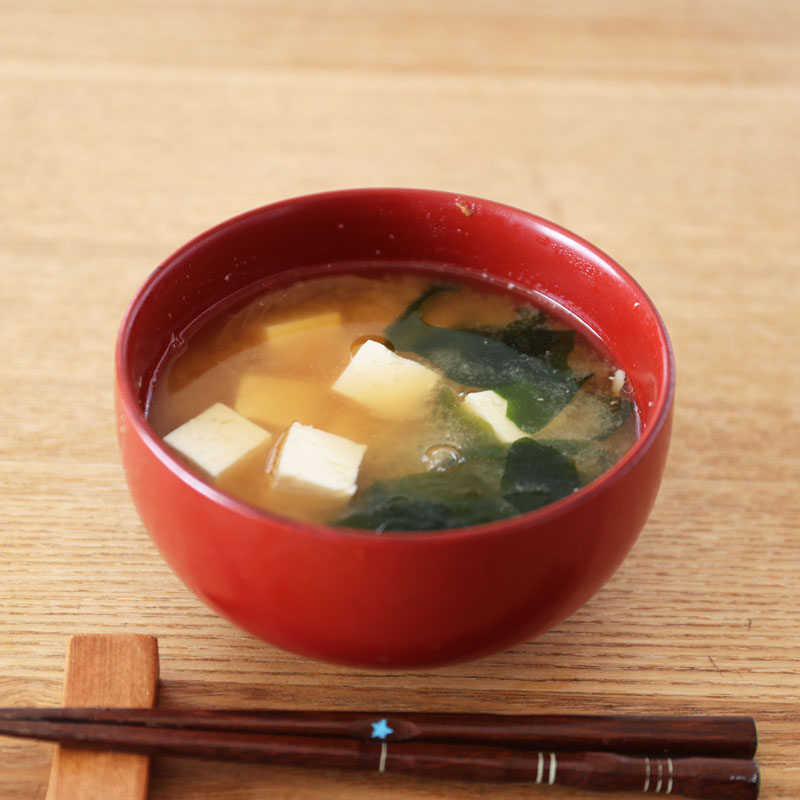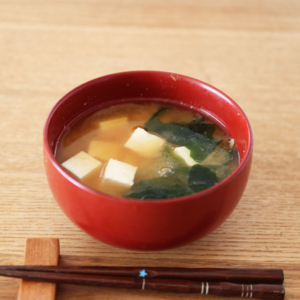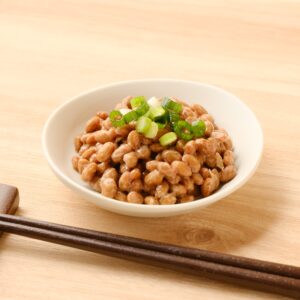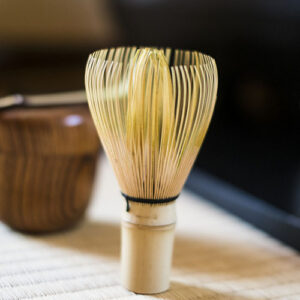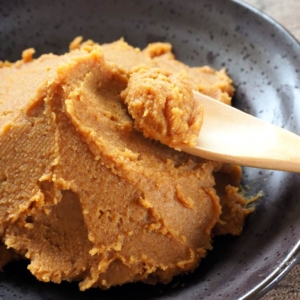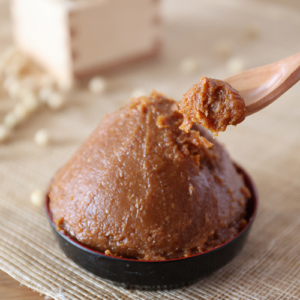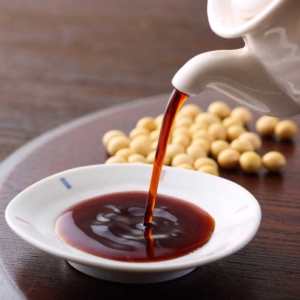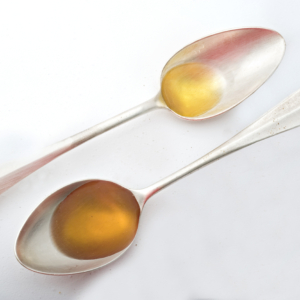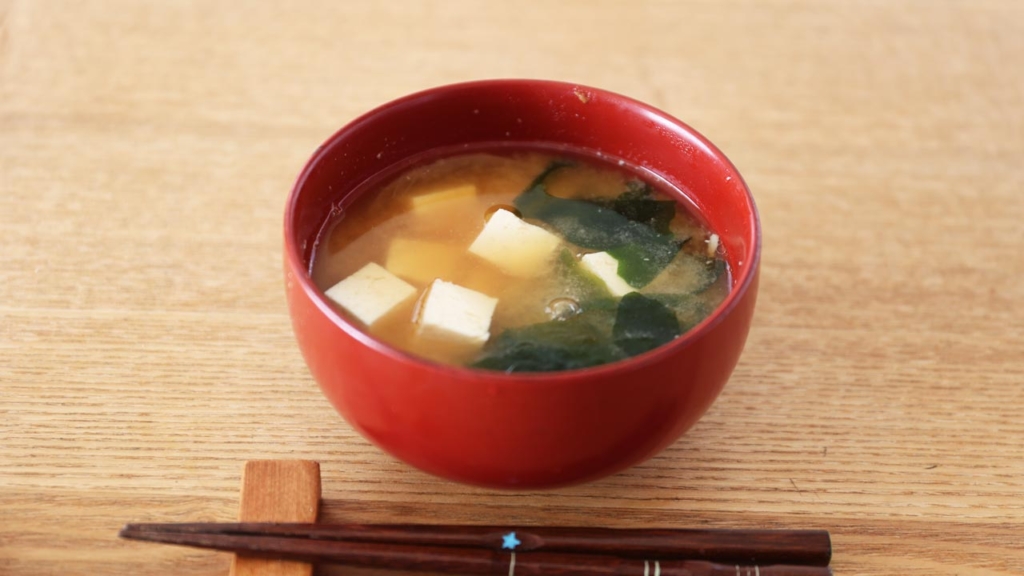
Miso soup (Japanese: 味噌汁 “miso shiru) is a soup cooked with miso (miso paste), dashi or broth, and other ingredients such as seaweed, tofu, vegetables, etc. It is a versatile menu that’s rich in nutrition and easy to cook. It also has a high capacity to wrap on any ingredients. However, when you go to many Japanese restaurants, the choice of ingredients tends to be more common, and always in a similar combination.
In this article, we will tell you the basic knowledge of miso soup, the calories, nutrients, and salt content in miso soup. Also, the features of our recommended ingredients to support your daily miso-soup-making!
Calories and Nutrients in the Miso Soup
Miso Soup Calories
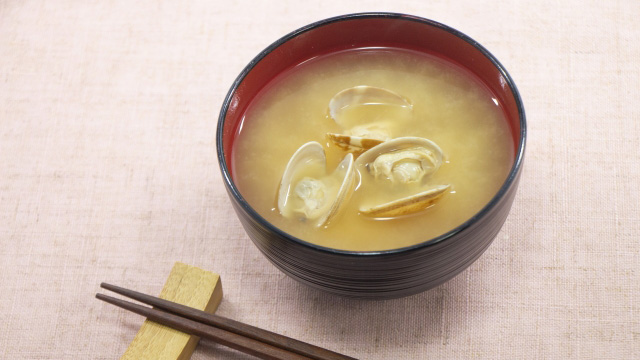
The calories of miso soup vary depending on the dashi used and the ingredients added.
For example; in a cup of miso soup made with red miso paste and katsuo dashi without any other ingredients, the calories are about 40 kcal. Another example; There are about 60kcal of calories in a cup of green onion and tofu miso soup. This amount of calories can be higher if you use ingredients such as seafood, potato, etc.
But since you don’t need to add oil when making miso soup, compared to Western-style soups that often had oil added and stir-fried, the calories in miso soup are quite low.
Nutrients in Miso Soup
In terms of nutrients, Miso Soup contains a lot of nutrients which beneficial for your health.
Some of the miso’s notable nutrients are protein (9 essential amino acids), Vitamin B, Vitamin E, Vitamin K, dietary fiber, minerals, and various substances such as isoflavone, choline, and lecithin. It also contains sugar, but the level of sugar content is low, just about 3g for one cup.
In addition, miso soup is said to have various health effects such as cancer prevention, lifestyle-related disease prevention, aging prevention, and radiation protection.
Learn more in this article:
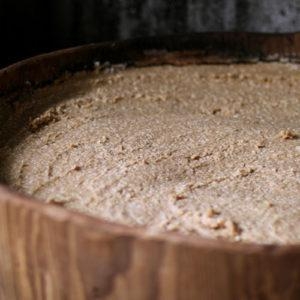
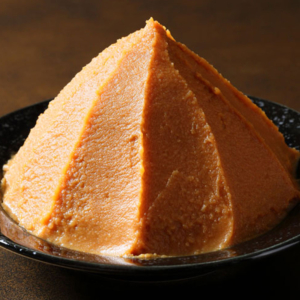
Salt Content and Blood Pressure in Miso Soup

Salt is often associated with an increased risk of developing high blood pressure, which is a major cause of stroke and heart disease. And we often read or hear some opinions about Miso Soup such as:
“Miso soup contains a lot of salt and It is bad for the body”
“Miso soup can cause high blood pressure.”
On the other hand, there is also an opinion that “miso soup can lower the blood pressure.”
Which one is actually the truth?
The amount of salt contained in miso soup is about 1.2g per cup. If you drink one cup for every three meals a day (means 3 cups a day), you’ll consume about half of the daily salt intake standard (8g for male, 7g for female) with miso soup at 3.6g.
Maybe you will think, “Won’t it be too much for one kind of dish?”
However, according to a study by Kyoritsu Women’s University, it is known that salt in miso soup does not affect blood pressure. Miso has the effect of suppressing the rise in blood pressure, which seems to counteract the effect of its salinity. If you consider blood pressure, you can say that miso soup is better than salt or soy sauce soup.
Recommended Ingredients for Miso Soup
Let’s take a look at our recommended combinations of miso soup ingredients.
Instead of using the same ingredients for your daily miso soup, you should try various combinations of ingredients and match them to the season and your physical condition!
Popular Miso Soup Ingredients

Miso soup ingredients outside Japan tend to be more common. You’ll easily find similar combinations such as tofu, wakame seaweed, mushroom, daikon, white radish, etc.
However, in Japan, there are a lot more variations of ingredients added to Miso Soup based on region, season, or even personal preference. Because of this, there are several media who did surveys on the popular miso soup ingredients for Japanese people.
Some of them are NLab (Netorabo Chousatai), PR Times, and All About News. Those three did the survey in 2021, and based on those three surveys, we come to the conclusion that the most popular ingredients for Miso Soup are listed at the table below (not sorted based on rank):
Please refer to the table below for more detail and find out suitable combination of the ingredients:
| Popular Ingredients | Calories (Per 50g) | Suitable Ingredients combination | Nutrients or Health Benefits |
|---|---|---|---|
| Tofu | 31 Kcal | Small green onion, green onion, wakame seaweed, pork, mushrooms, root vegetables | Tofu contains a lot of protein even with such low calories. It’s a highly recommended ingredient for your growing children. |
| Nameko mushroom | 8 Kcal | Small green onion, green onion, tofu, komatsuna, spinach | Nameko mushroom contains chondroitin, which is said to be good for preventing joint pain. This is a food that you would like to eat when you are concerned about knee or elbow pain. |
| Wakame seaweed | 9 Kcal | Tofu, deep-fried tofu (aburaage), onion, potato | Wakame is rich in dietary fiber and minerals. It has good effects on intestinal regulation and hypertension. |
| Daikon (white radish) | 9 Kcal | Wakame, carrot, deep-fried tofu (abura-age), pork, komatsuna | Vitamin C and digestive enzymes of white radish will be reduced when it’s heated, but potassium, calcium, and dietary fiber in it will still be intact even if you put it in miso soup. |
| Onion | 19 Kcal | Egg, potato, seaweed, pumpkin | If the onion is heated, it will have a blood flow improvement effect. It will be more effective if you leave it for a while after cutting and before putting it in the soup. |
Additional Useful Information:
– For Miso Soup with Seafood ingredients like Wakame, Asari, and Shijimi, we recommend using rice miso, which has been completely fermented. While for the dashi, if you use the combination of katsuo dashi and kombu dashi, you will have a very Japanese style miso soup.
– Miso soup with wakame is also very suitable with niboshi dashi (also called iriko dashi, which is Japanese dried infant sardines), and will bring a Japanese-home-style taste.
– For other than seafood ingredients:
If you prefer to use strong-flavored ingredients, it is best to combine them with strong-flavored miso paste and a mixture of niboshi and kombu dashi.
While If you prefer to use light-flavored ingredients, it is best to combine them with mild-flavored miso paste and a mixture of katsuo and kombu dashi.
Miso Soup with Root Vegetables

For miso soup with vegetables, we recommend “akadashi miso” paste which combines a strong flavor of soybean miso and rice miso. For example; Kyoto-style white miso, which has a creamy taste, and goes well with vegetables that have a soft taste like turnips.
As for the dashi, we recommend using dashi from animal ingredients, such as katsuo dashi and niboshi dashi. Dashi combined with kombu is also recommended. Please refer to the table below for more detail and find out suitable combination of the ingredients:
| Root Vegetables Ingredients | Calories (Per 50g) | Suitable Ingredients combination | Nutrients or Health Benefits |
|---|---|---|---|
| Potato | 38 Kcal | Onions, seaweed, cabbage, komatsuna (Japanese mustard spinach), napa cabbage | Potatoes are rich in potassium and have the effect of lowering blood pressure. It’s also rich in vitamin B1 and vitamin C. |
| Sweet potato | 67 Kcal | Deep-fried tofu (aburaage), onion, pork, mushrooms, root vegetables | Sweet potatoes are rich in dietary fiber. It’s also rich in useful substances for beauty, such as vitamin C and vitamin E, which are resistant to heat. |
| Turnip | 11 Kcal | Turnip’s leaf, komatsuna, fried tofu (aburaage), nameko mushroom | Turnips are rich in fiber, vitamin C, manganese, vitamin A and a good source of several antioxidants |
| Pumpkin | 46 Kcal | Onion, napa cabbage, shimeji mushroom, shiitake mushroom | Pumpkins are rich in beta-carotene and vitamin E, which make them have antioxidative effects and the effect of enhancing immunity. Highly recommended for preventing colds. |
Miso Soup with Fruit & Leaf Vegetables
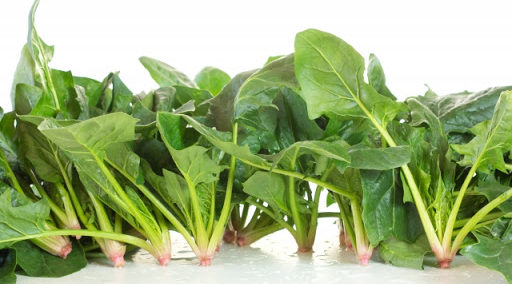
For miso soup with fruit vegetables and leaf vegetables, basically, the mixture of “akadashi miso” paste with “a combination of animal-based and kombu-based dashi” is recommended.
You can also combine the spicy “rice miso” with vegetables that have a strong sweet taste, such as cabbage, or even match it with sweet Kyoto white miso. Please refer to the table below for more detail and find out suitable combination of the ingredients:
| Root Vegetables Ingredients | Calories (Per 50g) | Suitable Ingredients combination | Nutrients or Health Benefits |
|---|---|---|---|
| Eggplant | 11 Kcal | Small green onion, egg, aburaage, okra | Eggplant’s purple color contains a polyphenol called nasunin, which has a strong antioxidant effect. it’s better to cook the eggplant with skin unpeeled. |
| Okra | 15 Kcal | Tofu, eggplant, enoki mushroom, wakame seaweed | Okra is known as a summer-season healthy vegetable that is rich in beta-carotene. It is said to have an effect on intestinal regulation and to protect mucous membranes. |
| Spinach | 13 Kcal | Egg, onion, enoki mushroom, aburaage, mung bean sprouts | Spinach is rich in iron and anti-cancer beta-carotene. Because it’s rich in oxalic acid, use it after boiling it in boiling water. |
| Komatsuna (Japanese mustard spinach) | 7 Kcal | Potato, tofu, white radish (daikon), aburaage, mushrooms | Just like spinach, komatsuna is rich in beta-carotene and calcium. |
| Cabbage | 12 Kcal | Potato, green onion, aburaage, egg, shiitake mushroom | Cabbage is rich in fiber, folate, potassium, magnesium, vitamins A, C, and K, and more. However the nutrients in cabbage will be reduced if it’s boiled too much, so be careful! |
| Napa cabbage | 7 Kcal | White radish (daikon), aburaage, salmon, enoki mushroom, shiitake mushroom | Napa cabbage is low in calories, rich in antioxidants, folates, vitamin C, Vitamin K, and fiber. It is compatible with any kind of ingredients |
| Mizuna (Japanese mustard greens/ spider mustard) | 12 Kcal | Tofu, fried tofu (aburaage), carrots, egg, potato | Mizuna is low in calories but high in several vitamins and minerals, including vitamins A, C, and K |
Miso Soup Recipes
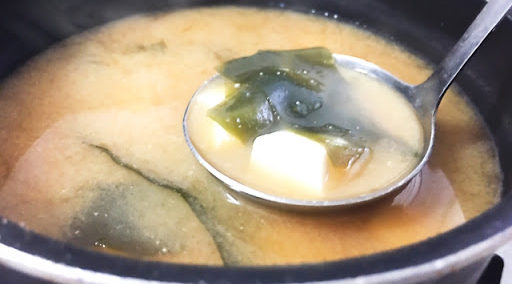
Now, you already have the basic knowledge of miso soup; the calories, nutrients, salt content, even our recommended ingredients to add to your daily miso soup menu. You might want to start making, or maybe do the experiment by yourself to make your own-style miso soup. You can use our articles below as your guide, especially if this is your first time making miso soup at home:
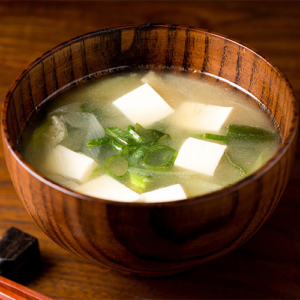
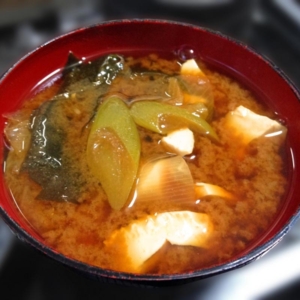
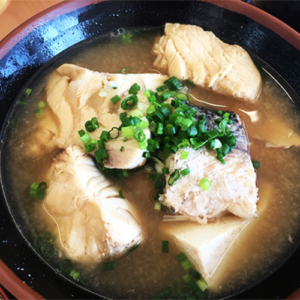
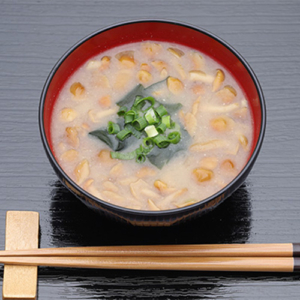
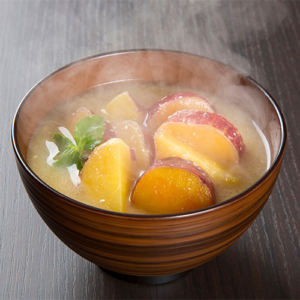
Miso Soup FAQ
- Is miso soup low in calories?
-
Compared to Western-style soups, the calories in miso soup are quite low. It is because to make miso soup you don’t need additional oil and stir-fried the ingredients.
For example, miso soup is about 40 kcal if only contained miso paste and katsuo dashi (without other ingredients). Meanwhile, a cup of miso soup with green onion and tofu is about 60 kcal. Of course, this amount can be higher if you use ingredients such as seafood, potato, etc.
- What are the recommended ingredients to make low-calorie miso soup?
-
Basically, as mentioned above miso soup is lower in calories compared to Western-style soups, Just make sure you don’t include additional oil and add too many stir-fried ingredients. But if you want some recommendations, we highly suggest you use vegetables, mushrooms, or any other plant-based ingredients.
- How many calories are in miso soup with tofu?
-
In a cup of green onion and tofu miso soup, there are about 60kcal of calories.
- How many calories are in seafood miso soup?
-
It depends on the seafood you use. If you use seafood such as clam, it might have higher calories. For example; Asari (15 Kcal per 50g) and Shijimi (32 Kcal per 50g). But if you use seaweed such as Wakame (9 Kcal per 50g) the calories tend to be lower.
- Can miso soup be effective for weight loss?
-
Adding miso soup to your weight-loss diet can help. It can help you cut down on your sugar intake and increase your vegetable intake. It is also low in calories if you choose the right ingredients.
- Is it safe to eat miso soup every day? What is the recommended intake per day?
-
Miso soup is safe to be consumed every day. However, to keep your salt intake in control, it is better to consume at least once a day, and maximum of three times a day (one serving for each mealtime).
- How long does miso soup go bad?
-
Miso soup is easily spoiled. If it’s refrigerated, it depends on ingredients, but it’s safe to eat in about 2 days after you cook it.
It is also possible to store it in the freezer as long as it doesn’t contain ingredients such as tofu and root vegetables that can change the texture of Miso Soup.
When eating, be sure to check the appearance, color, and odor regardless of the storage period.
- I heard that you shouldn’t boil miso paste when making the miso soup. What should I do when making with Japanese Hot Pot (nabe)?
-
If you want to taste the good flavor and aroma of miso, it is definitely not good to boil the soup after adding miso paste. However, you may want to soak vegetables and udon with the taste of miso when making miso nabe or miso udon. In such a case, it’s fine to simmer the soup over low heat so it wouldn’t make many bubbles.
Also in the case of nabe, if you grill the miso paste first before melting it down, the aroma will be brought out nicely, which can be delicious even if it’s boiled.
Recommended Miso Products
After reading this article, do you now have more ideas to make various miso soups so you wouldn’t be bored with the same ingredients again and again? Don’t forget that you will also need the basic ingredients such as dashi and miso paste.
You could check our product for your miso soup basic ingredients below:
Also Available On Amazon USA
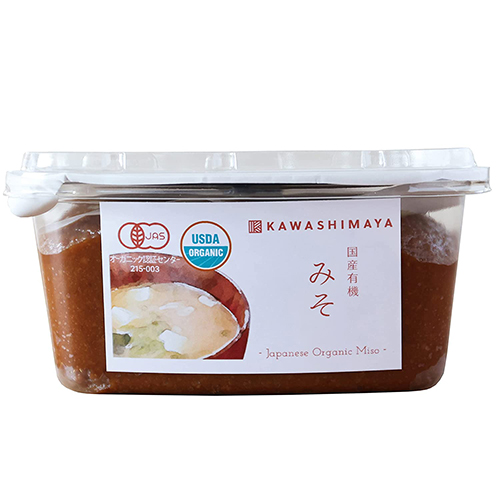
Organic Miso Paste 450g (15.8oz) USDA & JAS Certified, Additives-Free, Raw Probiotic, Traditionally Made in Japan
The genuine Japanese miso paste for greater umami in daily recipes. Characterized by a rich and mellow flavor that natural, old-fashioned fermentation method can only produce. USDA & JAS Organic certified, additives-free, no MSG, gluten-free, and vegan friendly. Made in Japan.
Price: $27.62

